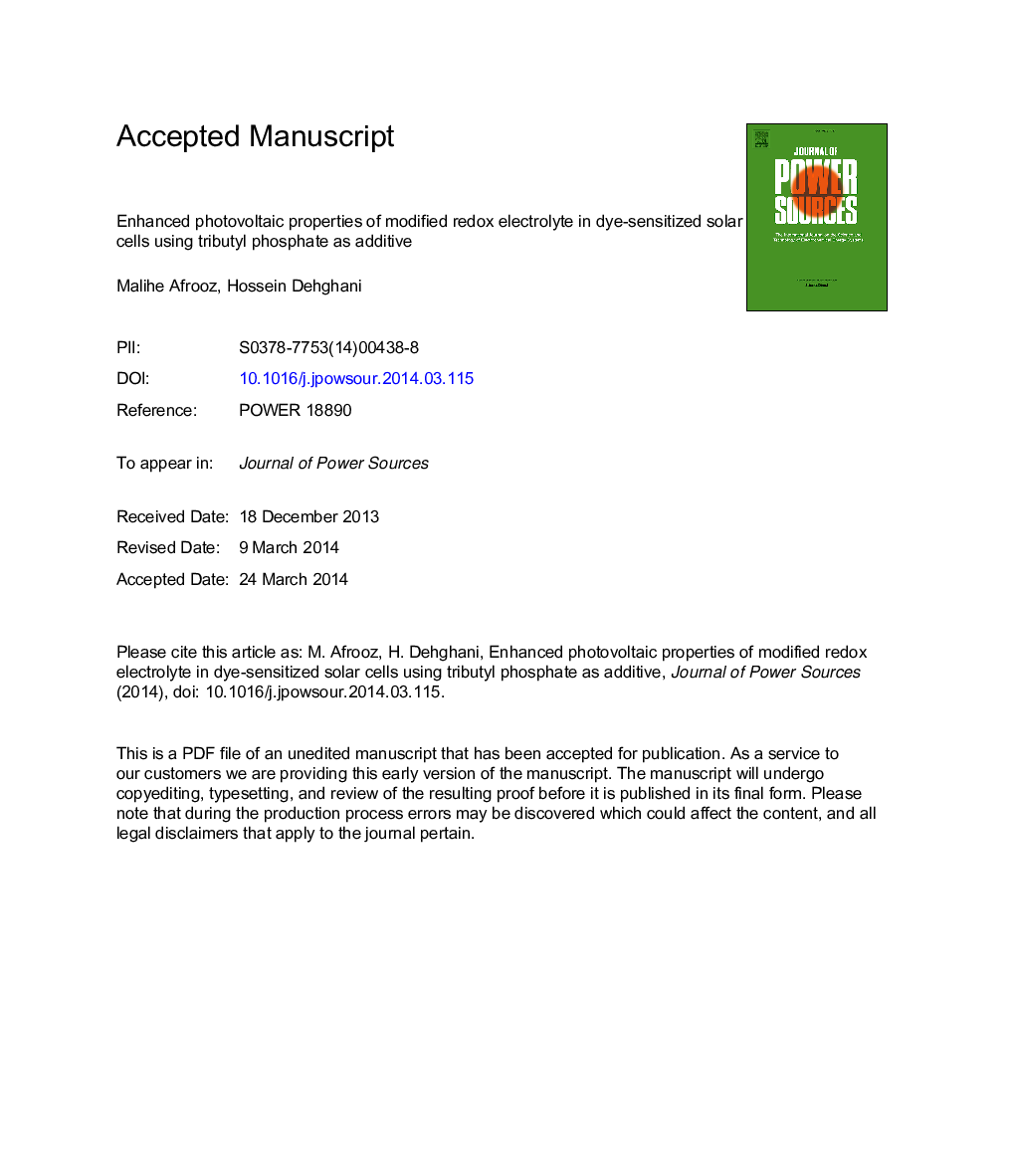| Article ID | Journal | Published Year | Pages | File Type |
|---|---|---|---|---|
| 7736984 | Journal of Power Sources | 2014 | 34 Pages |
Abstract
In this study, we report the influence of a phosphate additive on the performance of dye-sensitized solar cells (DSSCs) based on 2-cyano-3-(4-(diphenylamino)phenyl)acrylic acid (TPA) as sensitizer. The DSSCs are fabricated by incorporating tributyl phosphate (TBPP) as an additive in the electrolyte and is attained an efficiency of about 3.03% under standard air mass 1.5 global (AM 1.5G) simulated sunlight, corresponding to 35% efficiency increment compare to the standard liquid electrolyte. An improvement in both open circuit voltage (Voc) and short circuit current (Jsc) obtains by adjusting the concentration of TBPP in the electrolyte, which attributes to enlarge energy difference between the Fermi level (EF) of TiO2 and the redox potential of electrolyte and suppression of charge recombination from the conduction band (CB) of TiO2 to the oxidized ions in the redox electrolyte. Electrochemical impedance analyses (EIS) reveals a dramatic increase in charge transfer resistance at the dyed-TiO2/electrolyte interface and the electron density in the CB of TiO2 that the more prominent photoelectric conversion efficiency (η) improvement with TBPP additive results by the efficient inhibition of recombination processes. This striking result leads to use a family of electron donor groups in many compounds as highly efficient additive.
Related Topics
Physical Sciences and Engineering
Chemistry
Electrochemistry
Authors
Malihe Afrooz, Hossein Dehghani,
